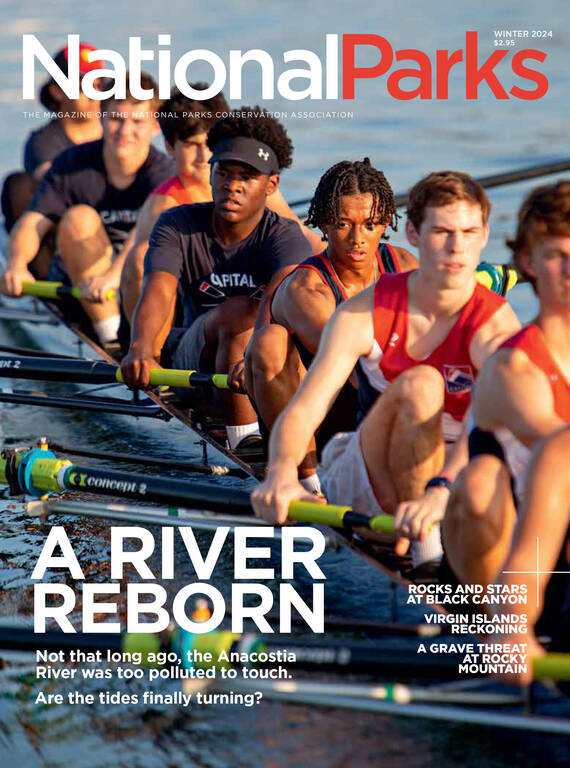Winter 2024
A Mammoth Homecoming
A restored 170-year-old stagecoach returns to Kentucky’s only national park.
Greg Davis first glimpsed the raggedy carcass in 1968 while rummaging through a warehouse in Mammoth Cave National Park where he was working for the summer. A farm boy from adjoining Hart County, he recognized wagon parts when he saw them, even if what remained was mostly wheel hubs and metal from the undercarriage. “I asked the guy who was with me,” recalled Davis. “And he said, ‘Oh yeah. That’s the stagecoach. That may be the one Jesse James robbed,’” referring to an 1880 holdup during which James allegedly stole a watch and brooch from a local judge and his daughter.
Between the mid-1800s and 1883, a handful of stagecoaches ferried visitors from nearby towns to Mammoth Cave’s limestone entrance. Famous passengers included Dom Pedro II, the last emperor of Brazil, and Edwin Booth, a Shakespearean actor and brother of the infamous John Wilkes Booth. Eventually, rail made the coaches obsolete. All but one would leave Mammoth, their fates unknown.
In 2015, nearly 50 years after first spying those rusty castoffs, Davis hatched a plan to restore this piece of park history. He convinced the concessionaire to donate the vehicle to the Mammoth Cave National Park Association and then worked with the association to pool $50,000, which they sent — along with the coach’s remains — to Amish craftsmen in Indiana. Some nine months later, a gleaming vision in crimson and yellow returned atop a flatbed trailer. Unfortunately, the park didn’t have a space (or doors) large enough to accommodate the coach, which measures roughly 9 feet tall by 12 feet long. So, park staff collaborated with the designers planning the remodel of The Lodge at Mammoth Cave to ensure the hotel could showcase the wood-sided vehicle in its new airy lobby.
In August, Bobby Bunnell, the park association president, sat in the coach as a team of horses pulled it from the park campground to the nearly finished lodge. Bunnell, whose grandparents were among the 600 or so families displaced by the park, feels a measure of closure with the vehicle’s return. He called the coach a monument to the time when the people who lived and worked and died on this landscape also served as guides and early promoters of the cave. “It’s a piece of local history coming home,” he said.
About the author
-
 Katherine DeGroff Associate and Online Editor
Katherine DeGroff Associate and Online EditorKatherine is the associate editor of National Parks magazine. Before joining NPCA, Katherine monitored easements at land trusts in Virginia and New Mexico, encouraged bear-aware behavior at Grand Teton National Park, and served as a naturalist for a small environmental education organization in the heart of the Colorado Rockies.


